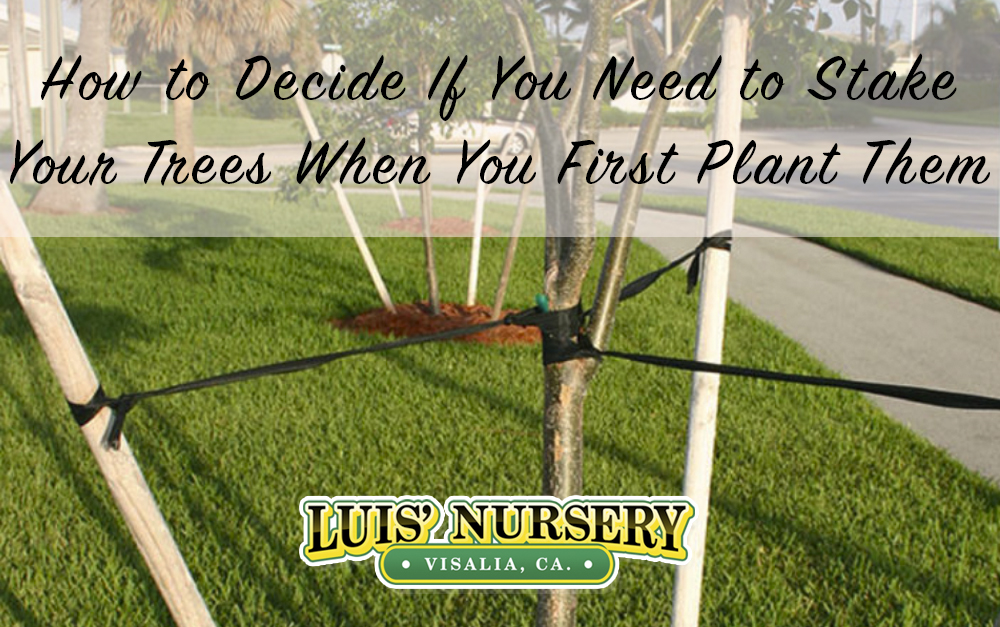Gardeners over the years have often been taught that staking a tree after planting was a no-brainer. They were advised in gardening magazines and books that all young trees need those stakes to withstand the winds and grow healthy and strong. This thought process has been often rebuffed by nature as you walk through a forest and see trees swaying and dancing happily in the wind free of the constraints of stakes.
Does that mean that you should never stake your trees? No. While many trees do not require staking and can often suffer from it, there are some newly planted trees that will be quite thankful for the added support. We are then left with the question: How do you know when to stake and when not to stake?
Inspect the Roots
A trees roots can quickly help you determine if the tree will benefit from staking. A bare-root tree will often thrive if given the support of a stake. If it does have a root ball, but it’s small in proportion to the tree, and with a dense crown of leaves, it won’t provide enough support. Also, if the tree is taller it will need the extra support while it develops its roots. This will protect it against high winds and keep it safe if the soil is shallow or poor. Stakes can also help protect them from the attack of an overzealous lawnmower.
A burlapped tree or trees with a correctly sized root ball are usually sufficiently bottom-heavy and can stand on their own without the help of a stake. These trees benefit from wind-caused movement that stimulates their root and stem development evenly.
Dangers of Staking the Tree Improperly
Along with deciding if you should stake a tree, you also need to not ignore the importance of how to stake the tree correctly. Staking a tree improperly can lead to issues with your tree health. An improperly staked tree will grow taller, but it’s trunk will be weaker due to reduced caliper, or trunk diameter. The root systems are often weak and smaller, and the tree will be more likely to snap in a high wind or not be strong enough to support itself when stakes are removed. The health of the tree is dependent on proper staking.
Tips for Proper Staking Technique
When you’ve decided your tree is ready to stake how do you make sure to stake it properly?
- Don’t stake it too high – Staking a tree too high is dangerous for your tree. You should always stake it no higher than 2/3 the height of the tree.
- Don’t stake it too tightly – The material that you use to tie the tree to the stake needs to be flexible. Using the inner tube of a bike tire would be a good option. This allows movement all the way to the ground and allows the trunk taper to develop properly.
- Don’t stake it too long – Once the roots are established you should remove the stake material. We recommend you allow your stakes to remain for a few years, and only remove them when the roots are fully established.
The health of your newly planted tree will depend greatly on your careful consideration when deciding whether or not to stake your tree. If you have any questions, or would like help finding the perfect addition to your landscape, we would be happy to help.

